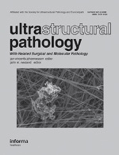
ULTRASTRUCTURAL PATHOLOGY
Scope & Guideline
Bridging Clinical Insights with Experimental Discoveries
Introduction
Aims and Scopes
- Ultrastructural Analysis:
The journal emphasizes the importance of ultrastructural studies using electron microscopy to investigate cellular and tissue architecture, which reveals critical insights into pathological changes. - Histopathological Investigations:
It includes detailed histopathological analyses to assess morphological changes in various diseases, contributing to the understanding of disease mechanisms and their clinical implications. - Immunohistochemical Studies:
The integration of immunohistochemistry allows researchers to identify specific proteins and markers in tissues, enhancing the diagnostic and prognostic capabilities of histopathological examinations. - Comparative Pathology:
The journal often features comparative studies across different species or conditions, providing a broader understanding of disease processes and potential therapeutic targets. - Toxicological Research:
Research on the effects of various toxins and pharmaceuticals on cellular structures and functions is a core area, highlighting the impact of environmental and therapeutic agents on health.
Trending and Emerging
- Nanoparticle Effects and Therapeutics:
Recent studies have increasingly focused on the effects of nanoparticles on cellular structures, showcasing their potential therapeutic roles and toxicological impacts, which is critical as nanotechnology advances. - Stem Cell Research and Regenerative Medicine:
There is a growing emphasis on the role of stem cells and their derivatives in tissue repair and regeneration, reflecting a trend towards regenerative medicine and its applications in pathology. - COVID-19 Related Pathology:
The impact of COVID-19 on various organ systems has emerged as a significant theme, with ultrastructural studies providing insights into the disease's multifaceted effects on health. - Molecular Pathology and Biomarkers:
An increasing focus on identifying molecular markers and understanding their roles in disease progression is evident, aligning with personalized medicine approaches. - Environmental and Chemical Toxicology:
Research into the effects of environmental toxins and chemicals on health is gaining traction, highlighting the need to understand the interplay between environmental factors and disease.
Declining or Waning
- Traditional Histology:
There appears to be a waning interest in purely traditional histological techniques without the integration of modern imaging or molecular methods, as researchers increasingly favor more comprehensive approaches. - Single Disease Focus:
Papers dedicated solely to single diseases without broader implications or comparative analysis are becoming less frequent, suggesting a trend toward interdisciplinary research that encompasses multiple conditions. - Basic Pathological Mechanisms:
Research focusing exclusively on basic pathological mechanisms, without translational or clinical applications, is declining as the journal emphasizes studies with direct relevance to clinical practice.
Similar Journals
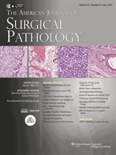
AMERICAN JOURNAL OF SURGICAL PATHOLOGY
Shaping the Future of Surgical Pathology TogetherThe American Journal of Surgical Pathology, published by Lippincott Williams & Wilkins, is a premier peer-reviewed journal serving as a vital resource for pathologists, surgeons, and researchers in the medical field. With an impressive impact factor reflective of its esteemed standing in the academic community, the journal ranks in the Q1 quartile for Anatomy, Pathology and Forensic Medicine, and Surgery as of 2023. The journal's Scopus rankings further highlight its significance, placing it within the top tiers in multiple medical disciplines. Established in 1977 and continuing through 2024, its scope encompasses groundbreaking research, critical reviews, and updates in surgical pathology, making it an essential tool for advancing the scientific community's understanding of disease mechanisms and therapeutic approaches. Researchers, clinicians, and students will find both comprehensive studies and innovative insights, ensuring they remain informed about the latest developments in surgical pathology.

Malaysian Journal of Pathology
Connecting researchers and clinicians through impactful insights.Malaysian Journal of Pathology, published by the MALAYSIAN JOURNAL PATHOLOGY, stands as a pivotal resource in the fields of pathology and medicine, contributing rich insights since its inception in 1979. This peer-reviewed journal, based in Malaysia, is dedicated to disseminating original research, review articles, and case studies that advance the understanding of disease mechanisms and diagnostics. With a current impact factor reflecting its ranked positioning—Q4 in Cell Biology, Q4 in Histology, and Q3 in both Miscellaneous Medicine and Pathology & Forensic Medicine—this journal serves as an essential platform for researchers, clinicians, and students alike. Although it operates without open access, its scholarly rigor and contributions are well recognized, holding ranks such as #84 in Pathology and Forensic Medicine according to Scopus. The Malaysian Journal of Pathology is committed to fostering innovation and excellence in medical research, making it an invaluable tool for professionals seeking to stay abreast of significant advancements in the pathology domain.
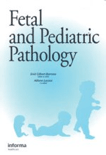
Fetal and Pediatric Pathology
Connecting research and practice for healthier futures.Fetal and Pediatric Pathology, an esteemed journal published by TAYLOR & FRANCIS INC, is dedicated to advancing the field of pediatric and fetal medicine through the dissemination of high-quality research and clinical insights. With an ISSN of 1551-3815 and an E-ISSN of 1551-3823, the journal has been a key resource for researchers and practitioners since its inception in 1983. Based in the United Kingdom, it covers a broad spectrum of topics relevant to Medicine, Pathology and Forensic Medicine, and Pediatrics, Perinatology, and Child Health, consistently reflecting on contemporary challenges faced in these fields. The journal has attained a commendable Q3 ranking within its categories as of 2023, underlining its relevance in the academic community. Though not an open-access publication, the research presented in Fetal and Pediatric Pathology plays a pivotal role in informing practice, guiding future studies, and enhancing the understanding of diseases affecting fetuses and children. Its convergence of research throughout multiple years, continuing until 2024, marks it as a crucial platform for ongoing scientific dialogue and innovation, aimed at fostering better health outcomes for younger populations.

PROTOPLASMA
Cultivating Knowledge in Cell Biology and Plant SciencePROTOPLASMA is a prestigious academic journal published by Springer Wien, dedicated to advancing knowledge in the fields of Cell Biology, Plant Science, and related areas of Medicine. Established in 1926 and continuing through 2024, this journal boasts a rich history of scholarly contributions and is currently indexed with a notable ranking in various disciplines: it stands in the top quartile (Q1) in Plant Science, the second quartile (Q2) in miscellaneous Medicine, and the third quartile (Q3) in Cell Biology as of 2023. With robust Scopus rankings placing it in the 86th percentile in Plant Science and a solid position in Cell Biology, PROTOPLASMA is recognized for its commitment to high-quality research and innovative findings. Although the journal does not offer open access options, it remains a valuable resource for researchers, professionals, and students seeking to explore the cellular and molecular underpinnings of plant life and its implications in broader biological contexts. Based in Austria, PROTOPLASMA serves as a vital forum for disseminating pioneering research that shapes the future of scientific inquiry in its respective fields.

International Journal of Clinical and Experimental Pathology
Unlocking the Secrets of Pathology for AllInternational Journal of Clinical and Experimental Pathology, published by E-CENTURY PUBLISHING CORP, serves as a vital resource for professionals in the field of pathology. With its ISSN 1936-2625, the journal has positioned itself within the competitive landscape of medical journals, achieving commendable rankings in Scopus, particularly in the categories of Pathology and Forensic Medicine (Rank #98/185) and Histology (Rank #38/58). Although its coverage in Scopus has been discontinued, the journal’s past contributions from 2009 to 2017 continue to be a touchstone for researchers interested in advancing their understanding of clinical and experimental pathology. The open-access format ensures accessibility to a wide audience, fostering collaboration and education in this essential medical discipline. By bridging clinical research and experimental findings, this journal plays a crucial role in disseminating knowledge and enhancing practices within pathology, making it an indispensable tool for researchers, professionals, and students alike.
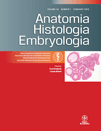
ANATOMIA HISTOLOGIA EMBRYOLOGIA
Bridging Veterinary and Medical Knowledge through ResearchANATOMIA HISTOLOGIA EMBRYOLOGIA, published by Wiley, is a well-regarded journal that serves as a vital resource in the field of anatomy and histology, with a particular emphasis on embryological studies. Established in 1972, this journal fosters cutting-edge research and discussions that deepen our understanding of the intricate relationships between structure and function across various species, while also addressing the parallels within veterinary and medical contexts. Though currently not open access, the journal maintains a significant impact within its scope, evidenced by its strong performance in Scopus rankings, particularly in the veterinary sciences, where it stands at rank #81 out of 194. With its dedicated focus on progressive scientific inquiry and publication regularly until 2024, the journal is committed to advancing knowledge and providing a platform for scholars, researchers, and practitioners alike. ANATOMIA HISTOLOGIA EMBRYOLOGIA is pivotal for those aiming to engage with the latest findings and methodologies in the fields of medicine and veterinary science, ensuring it remains an essential addition to any academic library.
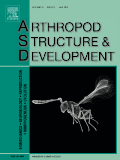
ARTHROPOD STRUCTURE & DEVELOPMENT
Unlocking the Secrets of Arthropod LifeARTHROPOD STRUCTURE & DEVELOPMENT, published by Elsevier Science Ltd, is a leading journal dedicated to the intricate study of arthropod morphology, physiology, and developmental biology. With an ISSN of 1467-8039 and an E-ISSN of 1873-5495, this journal plays a critical role in advancing our understanding of insect science as demonstrated by its impressive Q1 ranking in this category. It occupies a respected position within the academic landscape, being ranked Q3 in Developmental Biology and Q2 in both Ecology, Evolution, Behavior and Systematics, and Medicine (miscellaneous), illustrating its interdisciplinary appeal. Covering research from 2000 to 2024, ARTHROPOD STRUCTURE & DEVELOPMENT offers a robust platform for researchers who are keen to unlock the complexities of arthropod life, contributing significantly to the fields of entomology and ecological research. Open access options ensure that groundbreaking discoveries are readily available to a global audience, fostering collaboration and innovation. As a vital resource for students, professionals, and academics, this journal is indispensable for those dedicated to exploring the fascinating world of arthropods.
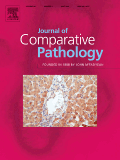
JOURNAL OF COMPARATIVE PATHOLOGY
Pioneering Research in Pathology and Forensic MedicineJOURNAL OF COMPARATIVE PATHOLOGY, published by Elsevier Science Ltd, stands as a significant publication within the fields of pathology and forensic medicine, as well as veterinary studies. With an ISSN of 0021-9975 and an E-ISSN of 1532-3129, this journal has been disseminating critical research since 1950, contributing to the advancement of knowledge through its focus on comparative pathology. The journal's reputable standing is underscored by its Q3 classification in Pathology and Forensic Medicine and Q2 in Veterinary (miscellaneous) for 2023, reflecting its vital role in shaping contemporary discourse in these domains. The Scopus ranks further solidify its presence, placing it at the 51st percentile in general veterinary sciences and the 32nd percentile in pathology—a testament to the quality and relevance of the contributions it publishes. Although it operates under a subscription model, the journal remains accessible to researchers and practitioners who aim to deepen their understanding of pathological phenomena across species, enhance diagnostic accuracy, and improve clinical practices. With a steadfast commitment to rigorous peer review and a global readership, the JOURNAL OF COMPARATIVE PATHOLOGY is an essential resource for those engaged in research and professional practice, fostering collaborations and innovations that bridge complementary areas of study.
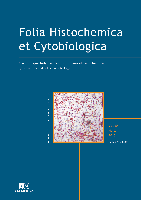
FOLIA HISTOCHEMICA ET CYTOBIOLOGICA
Bridging Knowledge Gaps in Histology and CytobiologyFOLIA HISTOCHEMICA ET CYTOBIOLOGICA, an esteemed journal published by VIA MEDICA, serves as a vital platform for researchers and professionals in the fields of histology, pathology, and cytobiology. With an ISSN of 0239-8508 and E-ISSN of 1897-5631, this Open Access journal has been disseminating significant findings since 1984, offering free access to a broad audience of scientists and academics. Based in Poland, this journal focuses on critical advancements in the study of cellular structures and functions, contributing substantially to the understanding of various diseases and biological processes. The journal currently holds a respectable impact factor, ranking in the Q3 category for Histology and miscellaneous Medicine, and Q2 for Pathology and Forensic Medicine as per the 2023 metrics. With its commitment to quality research and an inclusive publishing approach, FOLIA HISTOCHEMICA ET CYTOBIOLOGICA is poised to continue influencing its fields significantly through 2024 and beyond.
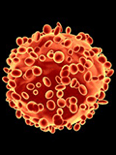
Annual Review of Pathology-Mechanisms of Disease
Exploring the Frontiers of Pathological ResearchAnnual Review of Pathology: Mechanisms of Disease is a premier scholarly journal published by ANNUAL REVIEWS that systematically reviews significant advancements in the field of pathology and the mechanisms underpinning various diseases. With an ISSN of 1553-4006 and an E-ISSN of 1553-4014, the journal has established its importance within the academic community, evidenced by its prestigious Q1 rankings in several categories including medicine, pathology, forensic medicine, and plant science for 2023. Notably, it ranks #1 out of 208 in the pathology and forensic medicine category, placing it in the 99th percentile according to Scopus metrics. Although not an open-access journal, it offers crucial insights to researchers, professionals, and students alike by providing a comprehensive understanding of pathophysiological concepts and emerging trends. The journal continues to be an essential resource for those dedicated to advancing research and practical applications in disease mechanisms.